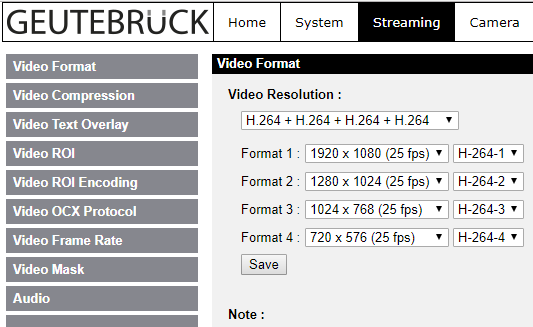Secondary Channel Function
The "Secondary channel" function makes it possible to create a second media channel for a camera that provides the same source in a second resolution/quality. Thus it is possible to obtain recording and live stream of a camera in two different resolutions. Applications are e.g. a low bandwidth stream for a WAN connection or an extra stream for VCA processing.
To activate the secondary channel, right-click on the root node of the corresponding hardware and select Add secondary channel.
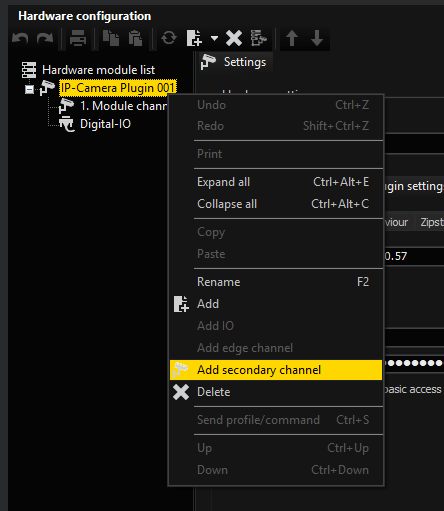
The module channel 1. Secondary channel then appears.
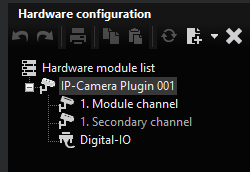
Then add the now accessible media channel via Media channels.
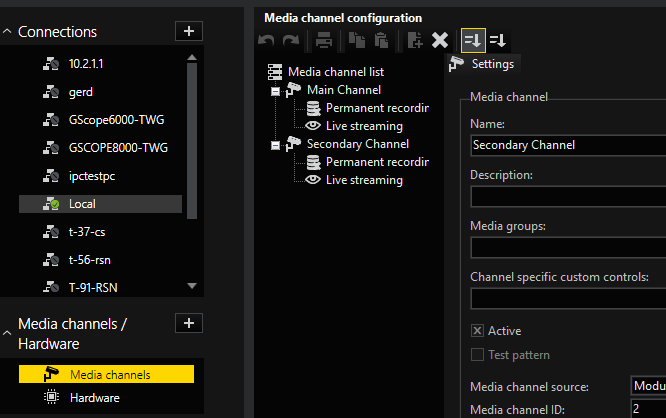
Duplicate Mode
In standard operation, the Seconday Channel will always receive a copy of the images that are intended for the main channel. In this mode, called "Duplicate Mode", the existing stream of the camera is used and made available to the second media channel again.
This mode is useful if the camera is not capable of delivering multiple streams simultaneously. The second media channel must then be transcoded to a lower resolution in order to achieve the desired goal of a different quality/resolution.
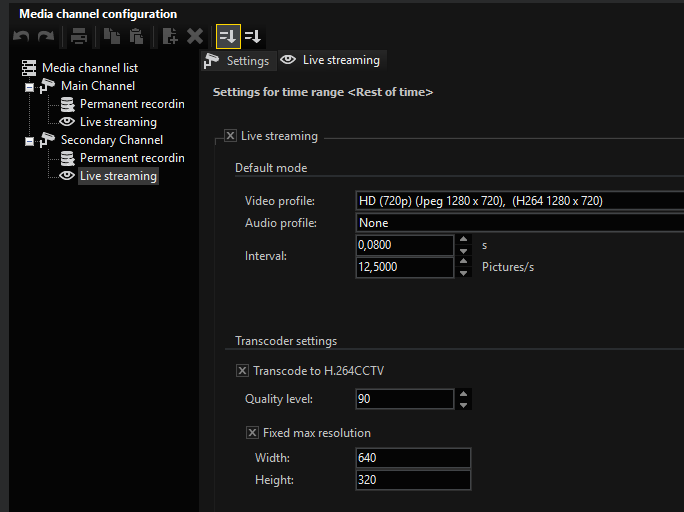
Individual Mode
The second mode is called "Individual Stream" and asks the camera for another own stream (or in the case of dualstream two additional streams) for the secondary channel. This doubles the number of streams picked up by the camera as opposed to "Duplicate Mode".
If the main channel is set to "single stream", the secondary channel also receives only one stream, so the camera requests a total of two streams.
If the main channel is set to "Dualstream", the secondary channel also receives two streams, and thus a total of up to four streams are requested from the camera.
Overview of the advantages and disadvantages of both modes:
|
|
Duplicate Mode |
Individual Mode |
|---|---|---|
|
Advantages |
The stream from the camera can be received with maximum resolution and frame rate. It can then be transcoded to any lower resolution/frame rate. 4K cameras can often only deliver one stream at 25FPS and are often not DualStream capable in this mode. |
The resolution/framerate can be freely selected. No transcoding is required and the resolution can be higher than that of the main channel depending on the camera. |
|
Disadvantages |
You have to use transcoding to get a lower resolution/quality. This requires additional CPU power on the G-Core. Furthermore, only smaller resolutions are available for the secondary channel, not larger ones. |
Since up to four streams are requested from the camera in dual stream mode, it will rarely be possible to achieve the highest frame rate. |
Special features in Duplicate mode: If the main channel is not streaming live or in memory, the secondary stream can select the resolution and quality itself. As soon as the main channel needs images, however, the resolution/quality of the main channel is used again and these are also duplicated into the secondary channel.
Secondary Channel with E3
In the E3 plugin, the secondary mode becomes visible in the hardware by selecting "Secondary channel". There you can decide between "Duplicate stream" and "Individual stream".

In the individual mode of the E3 camera, the following notes must be observed for the number of streams:
- If DSS is used, the number of streams in the camera is parameterized as set under "Streaming". For example, if three streams are selected there, the secondary channel will choose and use the one that fits best.
- With Singlestream the plugin will parameterize two streams in the camera. One for the main channel and one for the secondary channel.
Please note that a 4K camera in this mode will no longer be able to deliver 25FPS. If this is desired, you must select the Duplicate mode.
With Dual stream the plugin will not parameterize the streams in the camera when using Individual stream. You must select and parameterize the resolutions in the camera yourself. To do this, select the quadruple streaming functionality as shown in the following picture. Then select the desired resolutions as follows.
H-264-1 is the resolution for the memory stream from the main channel
H-264-2 is the resolution for the livestream from the mainchannel
H-264-3 is the resolution for the memory stream from the secondary channel
H-264-4 is the resolution for the livestreams from the Secondarychannel
